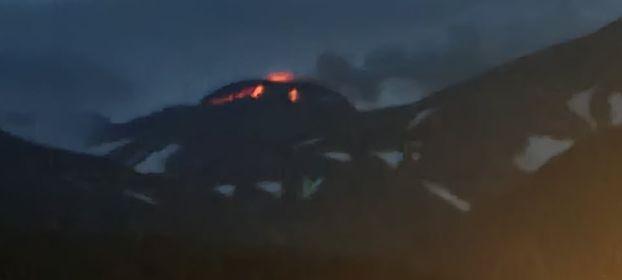
Three volcanoes continue to erupt across the Aleutian Chain. But that’s not out of the ordinary, says an Alaska geologist.
“There are at least 54 historically-active volcanoes in Alaska in what we call the ‘Aleutian arc.’ That’s the volcanic belt that stretches from just north of Anchorage all the way out to Attu. Historically active’ basically means that there’s been documented activity within the last 200, 250 years.” said Chris Waythomas, a geologist with the Alaska Volcano Observatory.
Three of those historically-active volcanoes are all at elevated alert levels — geologists’ way to say the trio is erupting, but there’s no immediate cause for concern.
Semisopochnoi Volcano
Semisopochnoi Volcano in the western Aleutians has actually been erupting on and off for nearly a year, but it’s just producing low-level ash clouds.
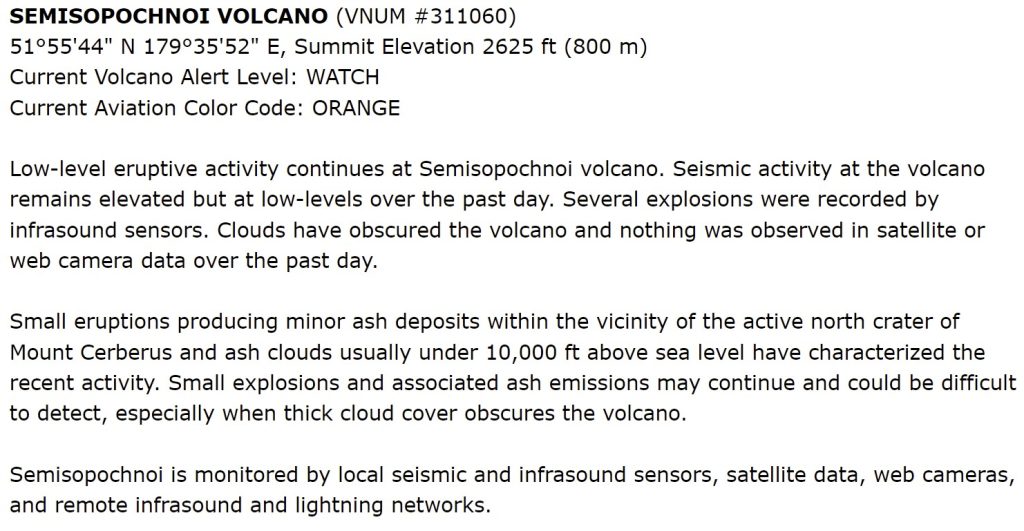
Great Sitkin Volcano
Great Sitkin, located about 35 miles from Adak, has been producing lava at the summit since mid-summer.
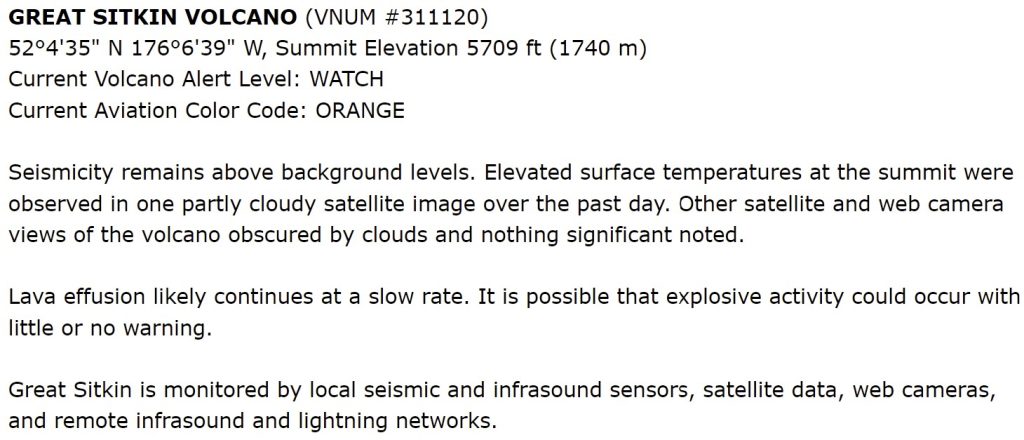
Pavlof Volcano
And Pavlof — one of the most active volcanoes in Alaska — has been producing low-level activity with ash bursts since late August.
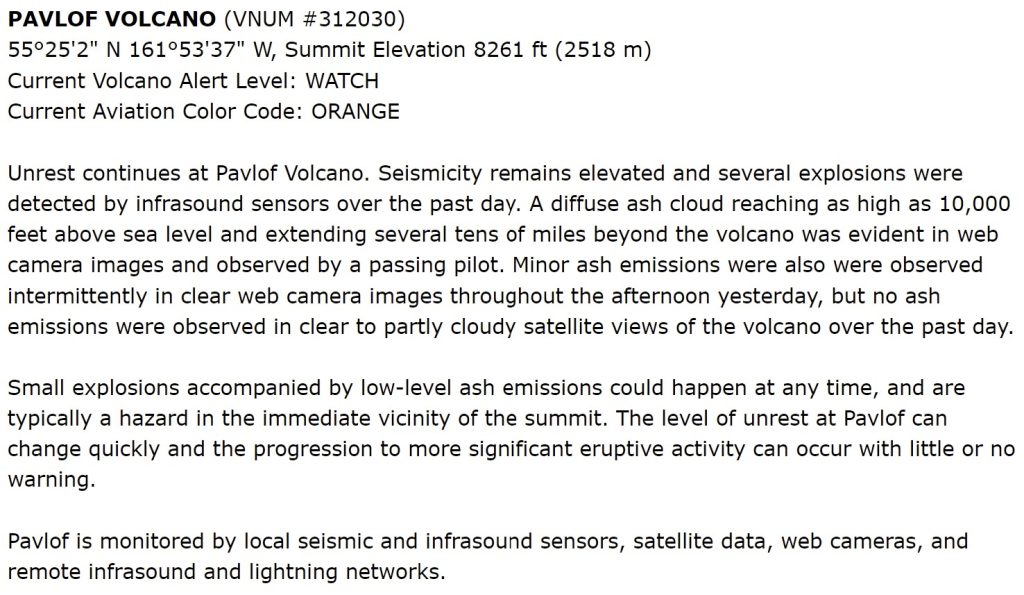
None of the volcanic activity has been hazardous, said Waythomas. “The big issue with all three of these places is that they’ve been hard to see because the weather’s been pretty cloudy,” he said. “So we don’t get observations as often as we would like.”
Scientists have a network of seismic sensors that detect ground motion around the remote volcanoes to help monitor when they may be erupting, according to Waythomas. But visual observations — currently obstructed due to cloud cover — confirm it.
“Satellite data and observations are often pretty key in confirming or refuting what we think might be happening,” he said.
Despite the bad weather, Waythomas said there’s no concern for nearby communities and no indication hazardous conditions will arise anytime soon. However, he said, each of the three volcanoes has a geologic record that indicates they can be much more explosive.
If something bigger was happening, he said, there’d likely be an uptick in geophysical data, like more magma or bigger earthquakes in these areas. “We don’t see anything like that,” Waythomas said. “And we really don’t think that that’s a likely possibility. We think these will just play out. The volcanoes will slowly go back to sleep, and then sometime again, they’ll pick up. That’s kind of what we’ve observed, historically, at these places.”
Another Alaska volcano is Novarupta, which produced the largest volcanic eruption of the 20th century. This video covers the recent eruptions from this volcano, and states the general hazard which it poses in the future.
Meanwhile, the Alaska Volcano Observatory will continue to keep a close watch on the volcanoes and work with the aviation sector and the weather service to alert communities of any hazardous activity.
Meanwhile, here’s how badly Anchorage would be affacted by a big volcanic blast! [ALaska Public]
Now subscribe to this blog to get more amazing news curated just for you right in your inbox on a daily basis (here an example of our new newsletter).
You can also follow us on Facebook and/ or Twitter. And, by the way you can also make a donation through Paypal. Thank you!
You should really subscribe to QFiles. You will get very interesting information about strange events around the world.



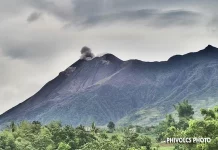
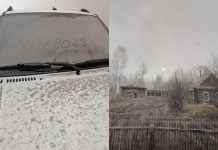









There goes the neighborhood.